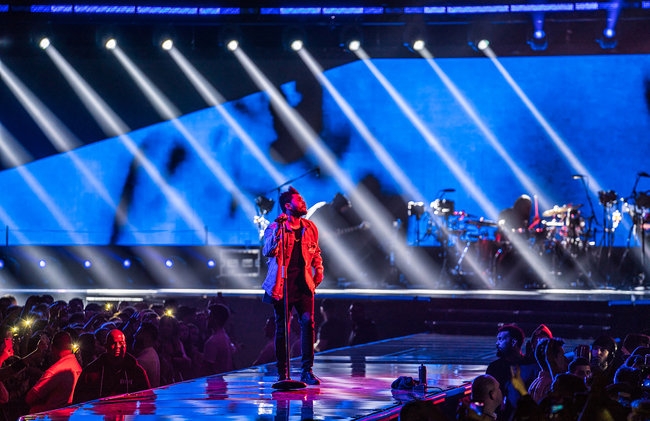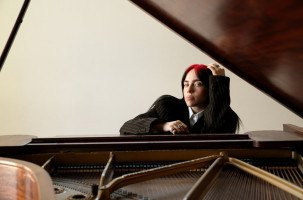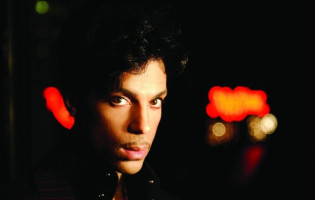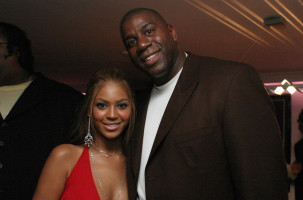When Sooner Routhier and Robert Long met in 2005, it was creative love at first sight. Long, a Louisiana-based show designer and creative director, needed a last minute replacement for a show he had designed and was referred to Routheir’s work—at the time, she was a lighting director on tour with the band Chevelle.
“As I remember it, I took a seat in the balcony behind the lighting position, and just sat back and watched,” Long tells Billboard. “By the third song of Chevelle’s set, I was sold.” The two have been working together since as business partners, forming the design company SRae Productions and working with artists like Halsey, Rihanna, Nicki Minaj, Die Antwoord, and The Weeknd.
Show production—an sophisticated and vital component to any musician’s career—is the art of enhancing the audience’s experience to its fullest level. “We design and create shows with custom scenic, video, lighting, effects, pyro, automation moves—everything you can think of,” Routhier says. “We create ‘moments’ in the show that when properly placed in the set list, help guide the audience through different emotions through visuals and music.”
Recently, SRae productions worked with The Weeknd on lighting Es Devlin's set design for the pop star's explosive “Starboy: Legend of the Fall” 2017 world tour. Billboard caught up with Routhier and Long to discuss their passion for show design, the process of bringing a concert to life, and why The Weeknd is “the Nine Inch Nails of R&B.”

Lighting and production design is such a specific career—it’s so technical and artistic all at once. When did you know this was something you wanted to pursue?
Routhier: I took dance in high school. When my dance teacher (Cheri Skurdall) asked her students to join the tech crew for extra credit, I instantly volunteered. I fell in love with lighting the body and the music in our dance productions. After seeing my first concert as a senior in high school I realized that my real love was the way that lighting reacts to music at a show. I went home and told my parents that I wanted to go on tour and light bands. Needless to say, they were not happy. They coerced me into going to a small liberal arts school in Vermont in the hopes that I would grow out of the desire to become a roadie. Unfortunately for them, it got worst! A regional lighting and sound rental house came through for a fall concert and I was one of the stagehands–I ended up working for Rainbow Concert Productions for about 5 years. On one of the shows at a local amphitheater, I met the production manager that would put me on my first tour.
Long: I got drunk one night and ended up in the back lounge of the Go Go’s tour bus. And here I am 20 plus years later. On a serious note, I was always the kid that sat in class drawing set designs that I would love to see. In those days arena rock was killing it, and I was at every show just watching and trying to learn how everything worked. After being accepted to Louisiana State University, I decided to take a summer off and work for a few local bands, which took me straight to Los Angeles. The rest is history. I worked with every local band I could get my hands on–[I was] a lighting designer, the guitar tech, the sound engineer, or just the roadie, it didn’t matter. Eventually, I became a touring production manager, but I never lost that love to create and work with artists through the creative process.
Generally, what is the process of preparing for a show?
Routhier: We usually begin with an initial call with the artist, creative director, or manager. Once we get a basic idea of the requirements, we begin our research. It’s important to really get a good idea of who you are creating for and what the audience is. Once we have a better understanding, we schedule another meeting or call with the client to get a little more detail. Robert and I kick around ideas and sketches until we settle on the basic idea of what we want to put on stage.
We then speak with our technical director –Matt Geasey– and begin the process of drafting in a 3D computer program. Once we have the model of the show build, we send to our render artist, Andy Reuter. The pictures are the most important part of the design process for us—we need good pictures to sell the ideas to the artist. After the presentation and acceptance of the design proposal, we begin the process of logistics. We usually work with the production manager and various vendors to dial the project in.

You work with The Weeknd, who’s currently on his “Starboy: Legend of the Fall” 2017 world tour. What was it like to design for this show? I know you worked with stage designer Es Devlin, who has worked with everyone from JAY-Z to Adele and designed Beyoncé’s Formation tour.
Routhier: We’ve been working with The Weeknd since 2012. We’ve seen his career grow through five or six different designers. I was hired to program and design lighting for his first shows in Montreal. I just remember being in awe that this underground artist had sold out three shows in the theater that I used to see shows at in high school. Every night, the room was flooded with cell phone light, and all the fans were singing every lyric. There was something really magical about watching him grow to what he is now.
When Lamar–the creative director–called me last summer to jump in and design lighting for Es Devlin’s scenic design, I could not have been more excited. I have admired Es for years. She is incredibly inspiring and groundbreaking. I love the limits she pushes and explores through her art. And she is an absolute delight to work with. The process was really fun. She and her team create actual 3D models that look like sculptures for each project. It’s amazing to look at these real representations to explore unique ways to light them.
What kind of visuals does his music and overall aesthetic evoke in you?
Both: We’ve always called his aesthetic the Nine Inch Nails of R&B. His music has so many dynamics and the visuals and lighting have to reflect that. But, it still has to be simple. For example, there could be a high hat or kick rhythm that starts at the beginning of the song and tracks straight through to the end. As lighting designers, we always want to accent those noises with different lights.
However, once you do that with The Weeknd’s music, the stage looks sloppy. There are just too many accents and beats to hit in the music. So, we dumb it down. We find one system of lights to accent each beat and ride that system through the song. We selected Martin by Harman lighting fixtures for this tour. We used VDO Sceptron 10 LED video fixtures to create an innovative lighting design that blends video projection with a futuristic and highly customized outline. By outlining the set with the VDO Sceptrons, we were able to create a “Tron-like” edge to the video content. They were really perfect for the “Starboy” tour.

What is one thing about lighting design that you believe is most misunderstood?
Both: It’s not as easy as drawing a pretty picture on a piece of paper. The show has to be constructed and fit into boxes – both literally and figuratively on a spreadsheet.
Who are some designers you look up to? What have they worked on and how has that impacted you?
Routhier: I have always looked up to and respected Roy Bennett. His lighting designs for Nine Inch Nails and Prince have inspired me since I was in college. I also love Es Devlin to pieces—her theatrical art is breathtaking and profound.
Long: I want to be Butch Allen when I grow up. No, seriously!
As designers and visual artists, where do you see yourself in the near future?
Routhier: World domination.
Long: Ditto.








